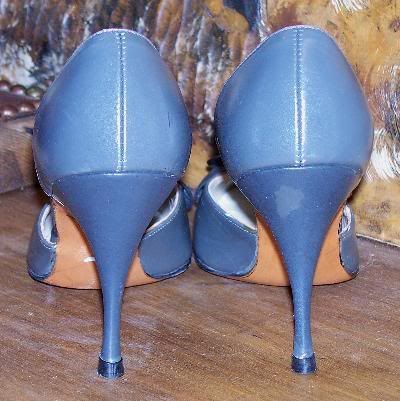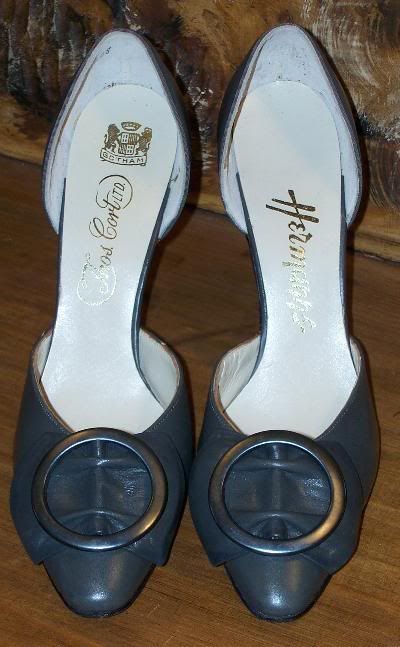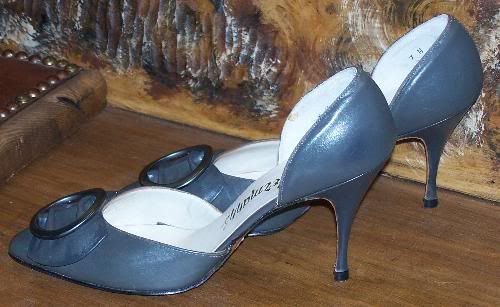igotbuttons
Registered Guest
Hello everyone! I have several pairs of shoes that I have questions about. Most shoes hurt my feet so I never really learned the differences about construction, styles, designs, eras, keywords, etc. but I do LOVE to buy them! LOL
Is there a reference book that I can purchase that is devoted entirely to shoes and styles of shoes so that I can start learning more about them?
Well, here is the first pair of shoes I was able to get pics of quickly yesterday.
The heels are 3 1/2" tall. I'm not sure if they are stiletto or spike heels. What's the difference? Can anyone help me with age?
They are more of a steel gray. One shoe reads "Thos. Cort LTD." with "Gotham" and the other reads "Herman's" on the inside (is this called the insole?). They are size 7.
Thanks in advance for any assistance!
patti



Is there a reference book that I can purchase that is devoted entirely to shoes and styles of shoes so that I can start learning more about them?
Well, here is the first pair of shoes I was able to get pics of quickly yesterday.
The heels are 3 1/2" tall. I'm not sure if they are stiletto or spike heels. What's the difference? Can anyone help me with age?
They are more of a steel gray. One shoe reads "Thos. Cort LTD." with "Gotham" and the other reads "Herman's" on the inside (is this called the insole?). They are size 7.
Thanks in advance for any assistance!
patti





